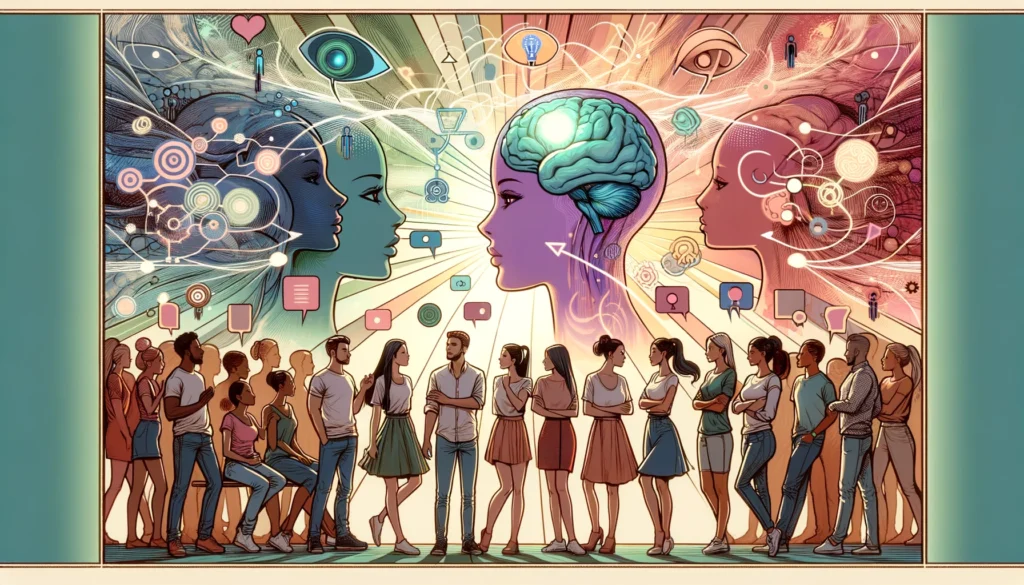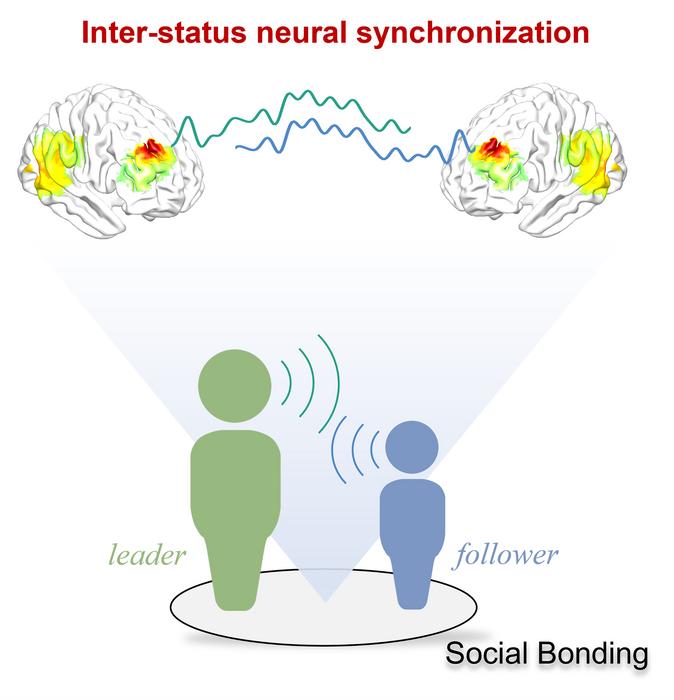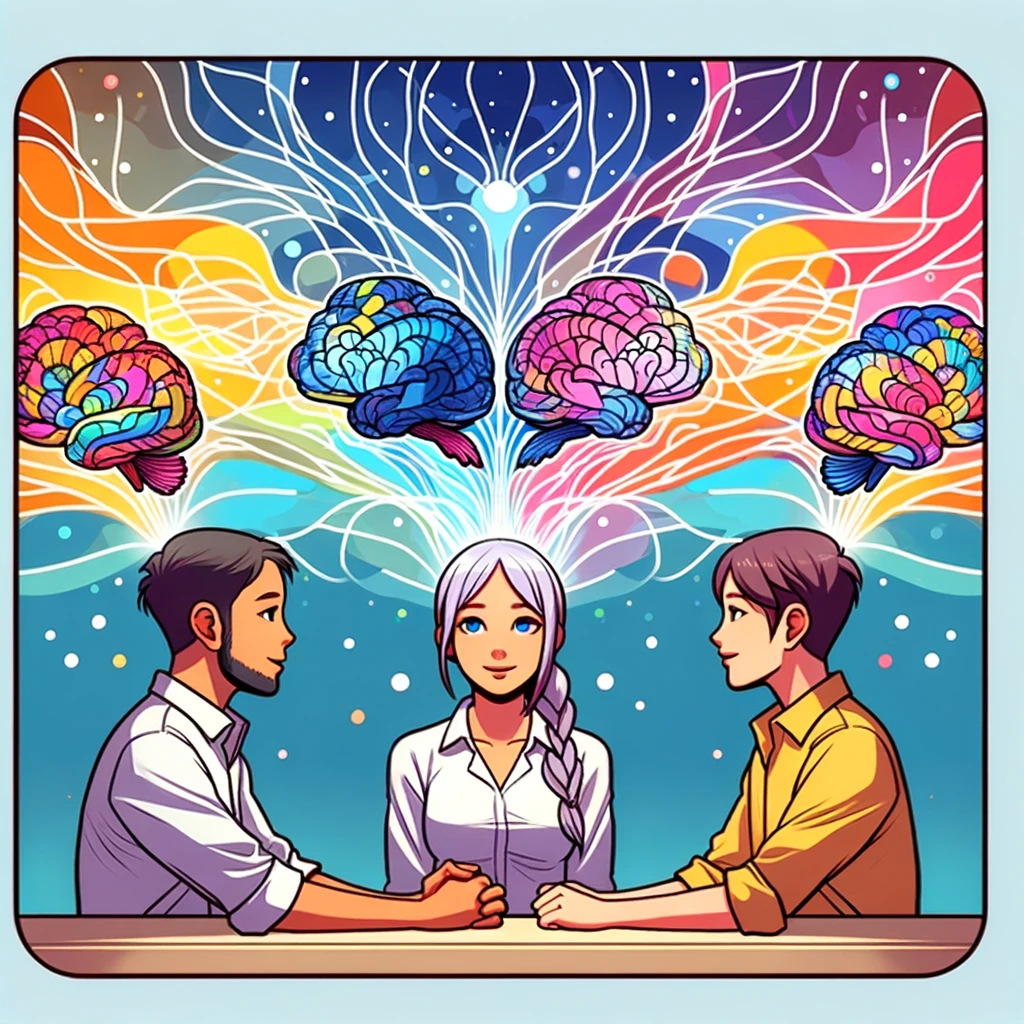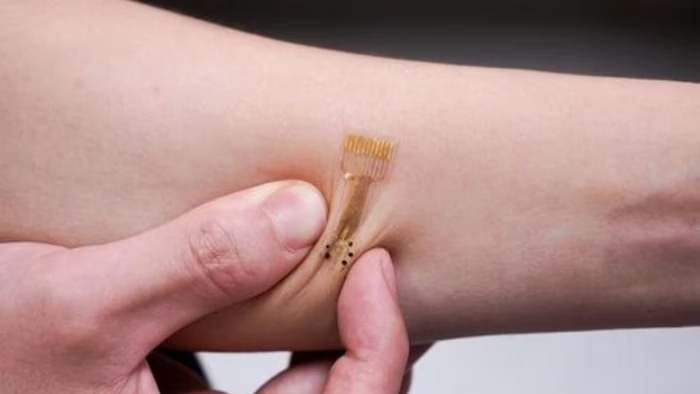From PLOS 20/03/24

When small hierarchical groups bond, neural activity between leaders and followers aligns, promoting quicker and more frequent communication, according to a study published on March 19th in the open-access journal PLOS Biology by Jun Ni from Beijing Normal University, China, and colleagues.
Social groups are often organized hierarchically, where status differences and bonds between members shape the group’s dynamic.
To better understand how bonding influences communication within hierarchical groups and which brain regions are involved in these processes, the researchers recorded 176 three-person groups of human participants (who had never met before) while they communicated with each other, sitting face-to-face in a triangle.
Participants wore caps with fNIRS (functional near-infrared spectroscopy) electrodes to non-invasively measure brain activity while they communicated with their group members.

Each group democratically selected a leader, so each group of three ultimately included one leader and two followers.
After strategizing together, groups played two economic games designed to test their willingness to make sacrifices to benefit their group (or harm other groups).
Experimenters assigned some triads to go through a bonding session, where they were grouped according to color preferences, given uniforms, and led through an introductory chat session to build familiarity.
Bonded groups spoke more freely and bounced between speakers more frequently and rapidly, relative to groups that didn’t experience this bonding session.
This bonding effect was stronger between leaders and followers than between two followers.

Neural activity in two brain regions linked to social interaction, the right dorsolateral prefrontal cortex (rDLPFC) and the right temporoparietal junction (rTPJ), aligned between leaders and followers if they had bonded.
The authors state that this neural synchronization suggests that leaders may be anticipating followers’ mental states during group decision-making, though they acknowledge that their findings are restricted to East Asian Chinese individuals communicating via text (without non-verbal cues), whose culture emphasizes group cohesion and commitment towards group leaders.
The authors add, “Social bonding increases information exchange and prefrontal neural synchronization selectively among individuals with different social statuses, providing a potential neurocognitive explanation for how social bonding facilitates the hierarchical structure of human groups.”












